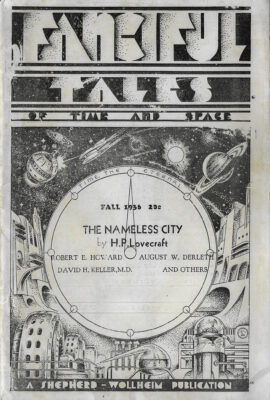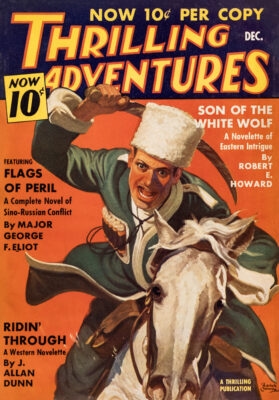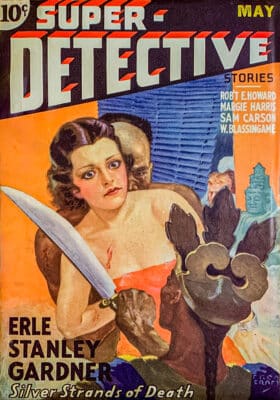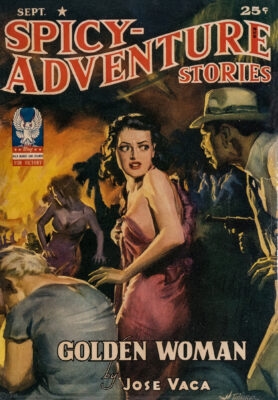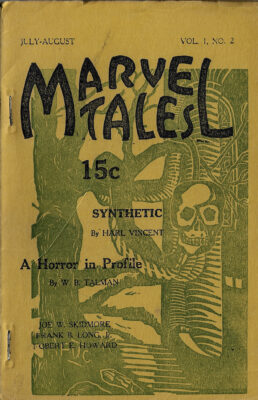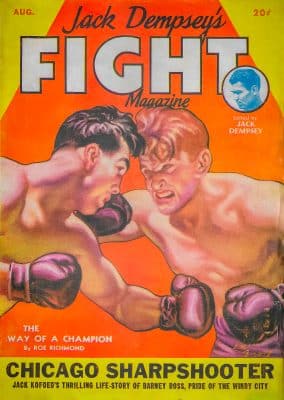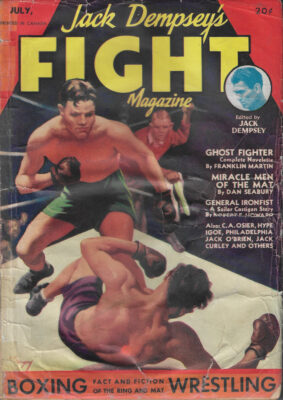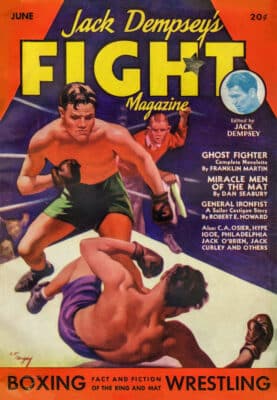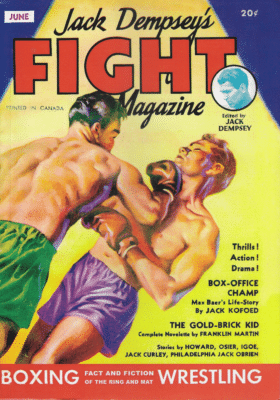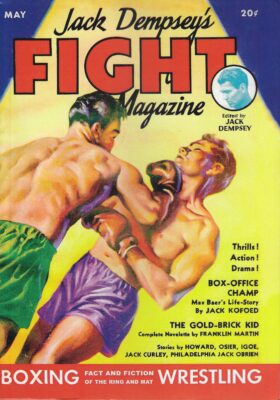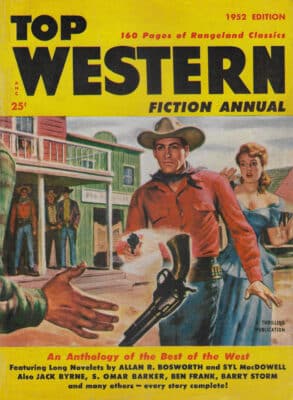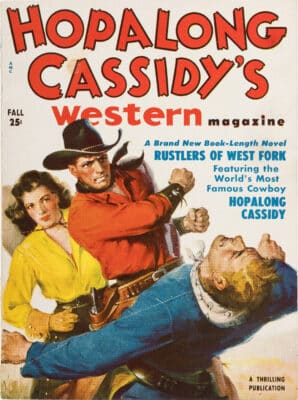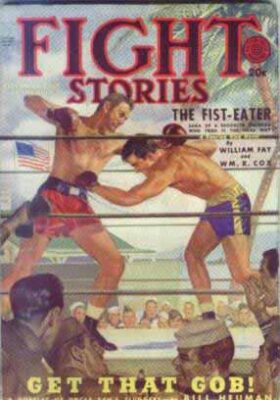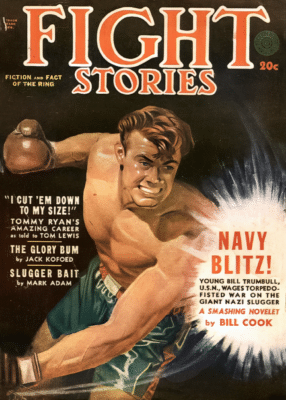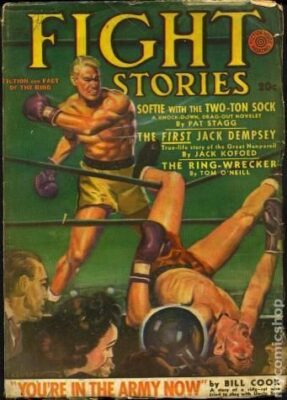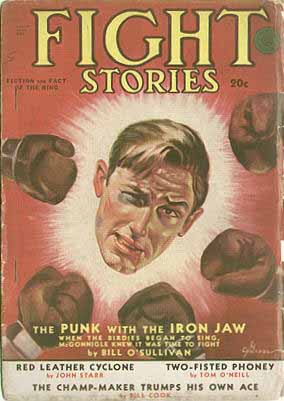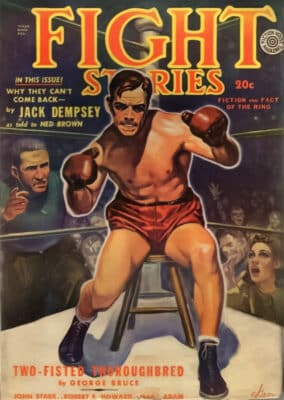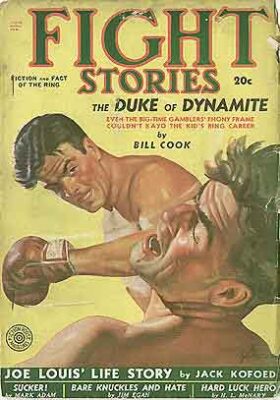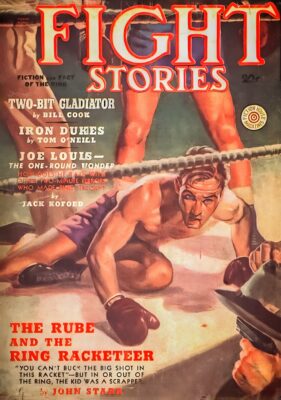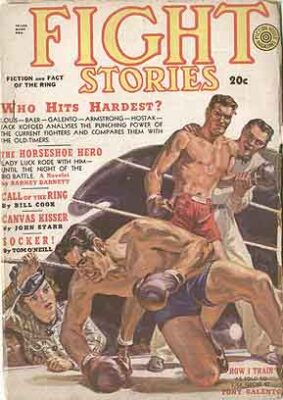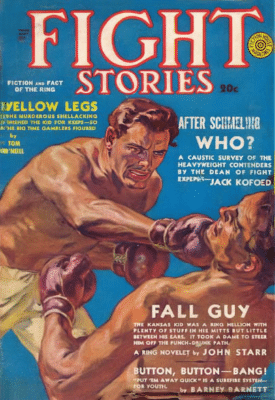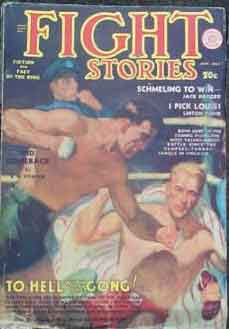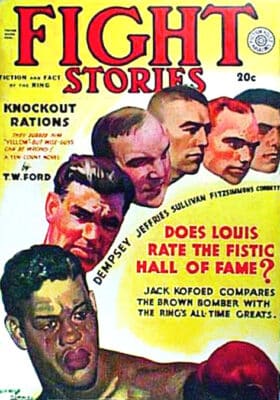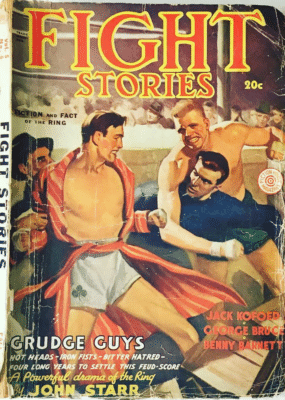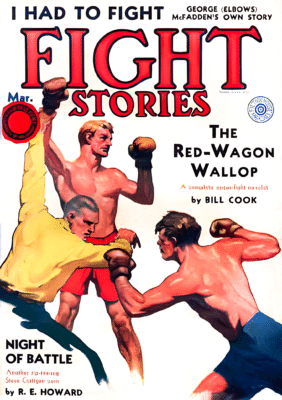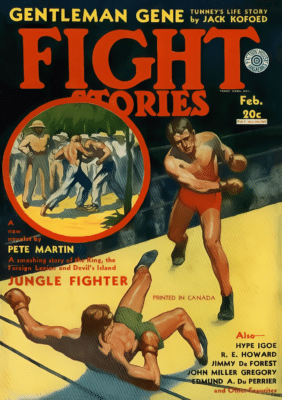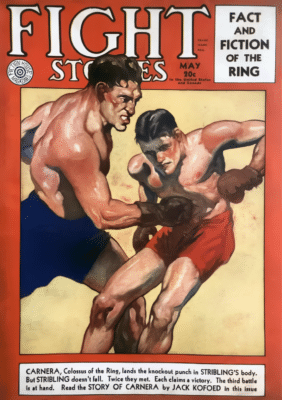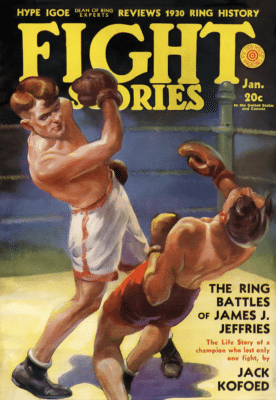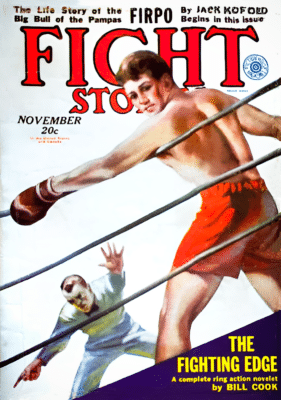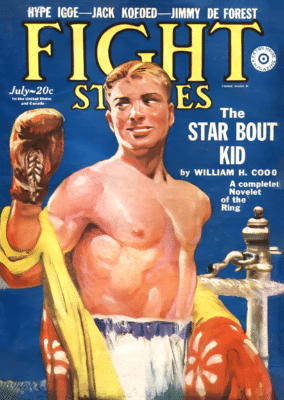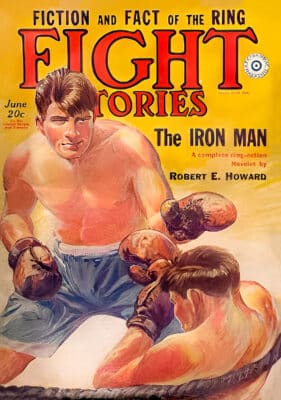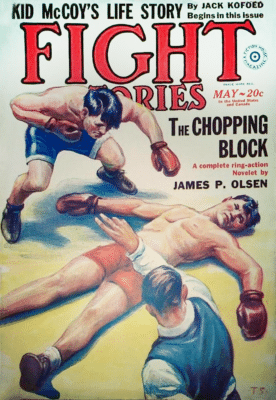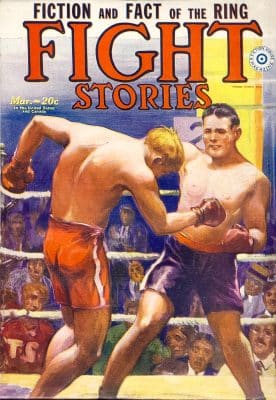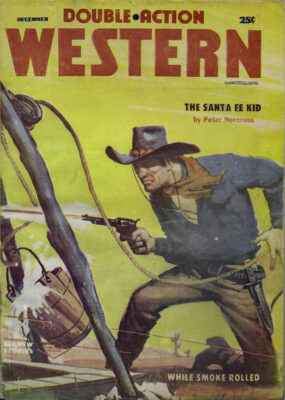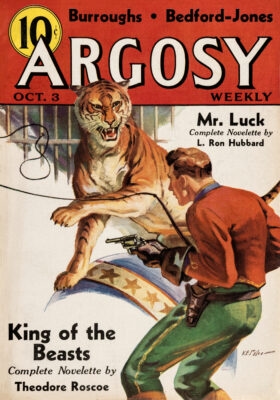In September 2024, Patrice Louinet discovered a previously unknown letter written by Howard to Adventure. It was printed on pages 188-189 on December 30, 1923 (Vol. XLIV; No. 3).
The letter goes like this:
White Man and Native of West Africa
HAUSAS—trading-factory terms—marriage ceremonies and customs:
Question:—”I am writing to get some information in regard to the customs, habits, etc., of the natives of that part of Africa which is included in your section in ‘Ask Adventure.’
- Are the natives of a war-like stock? That is, did they come from a fighting race?
- How much authority does the superintendent of a trading-post possess?
- Do the whites interfere with the natives in dealing with native criminals?
- What are some of the punishments of native wrong-doers by the whites? By the natives themselves?
- What are some marriage customs among the natives? Am I right in supposing a native has full power to punish his wife in any way he pleases?
- Have the morals of the African natives been raised by the rule of the white men or have they decreased in standard?
- Is the ceremony of Mumbo-Jumbo—or something of some name like that—for the correcting of disobedient women used in that part of Africa? If so, how is it carried out?
- What is the customary costume of the natives?
I apologize for asking so many questions, but I am very much interested in Africa. If by any chance this letter should be published in Adventure, please do not print my name.”—R.E.H., Cross Plains, Texas.
This is very likely part of Howard’s research for some of his stories that dealt with Africa. Thanks to Ed Chazyk for pointing out that these stories may have been written as a result of his research:
Black Country, The Hyena, The Fear Master, The Slayer and Wings of the Bat.
There was also in the same magazine a lengthy answer:
Answer, by Mr. Simpson.—Although your questions are, for the greater part, too general for full treatment in a letter, I’ll try to do my best for you, taking each question on its merits as it comes along.
- The natives of West Africa, in the number of their tribes, are as the proverbial sands of the sea. Some of them are fighters, some are just ugly and mean, and others are just living along and making as little fuss about it as the law and the climate allow. Generally speaking, the soldiers and police in the several colonies along the coast are mostly Hausa and Yoruba, although in Sierra Leone and Gambia I understand Bambara, Mandingos, Susus and others are enlisted.
The Hausa is the fighting man of West Africa. He is also, by the same token, the greatest trader; fighting and trading, particularly in the “old days,” having just naturally gone hand in hand. Heinrich Barth claims they are the Atarantians of Herodotus. Barth’s “Travels in North and Central Africa” or C. H. Robinson’s “Hausa land” is authoritative reading on the subject.
- The superintendent or agent of a trading factory used to have the same authority as the captain of a ship. Originally they were ship captains, and the traditions of the old ship trading days became part and parcel of the later trading-factory life. Remnants of these traditions are still to be found in the fact that the floor is called the “deck,” the kitchen the “galley,” the houseboys “stewards,” the agent the “captain,” the dining-room the “saloon,” and on the majority of Oil Rivers factories a ship’s bell keeps a man informed of the passing of time, just as on ship-board.
With the advent of the Government the trading agent’s authority naturally became curtailed, the law of the land passing into the hands of the district commissioner; but he still retains sufficient authority to make it very uncomfortable for any one—white or black—in his employ whom he doesn’t happen to like. But his czardom, except on isolated stations, isn’t quite the empire it used to be.
- Technically the white Government deals with native criminals when it catches them. But the native chief, if he feels anxious enough to mete out his own conception of punishment for an offense against his dignity or person, still manages to have any little private grudges of the sort out of the Government’s hands.
- The principal form of punishment by the whites for the most prevalent offense on the part of the native—namely, stealing—is flogging. This was one of the trading agent’s privileges, and I’ve known of several who liked to stand and watch the thing done.
There was a native court in Warri, Nigeria, composed of a jury of native chiefs and presided over by a white commissioner, which carried out the letter of the law upon offenders according to the nature of the offense; and these courts are dotted all over West Africa, wherever a commissioner is stationed. On the Gold Coast they have traveling commissioners who, like circuit judges, go about dealing out justice as best they can. At Warri, all the principal centers of Government have a fairly good jail for the accommodation of convicted criminals, and so that they won’t be likely to run away, they form them into chain-gangs and put them to loading ships, keeping the walks and the lawns tidy, or any other little odd jobs that happen to be lying around. Capital offenders, after a trial, are hanged on the nearest mango-tree.
- Every tribe has its own kind of marriage ceremony, so I won’t attempt to go into that. Marriage, broadly speaking, is a purchase-and-sale proposition. A man buys as many wives as he can afford, and those he doesn’t happen to like he can simply “put away.” And that’s that. If, however, a wife should be proven unfaithful, he can in some instances get his money back from the father. Some of the marriage ceremonies are quite elaborate, involving “blood bonds” and all sorts of paraphernalia.
I would not say that a native has full power to punish his wife in any way he pleases; but he can, particularly if he is a chief, make it desperately uncomfortable for her without much interference from anywhere. And it takes a lot of brutality to make a West African wife even slightly uneasy.
- This is a question which involves a discussion on the subject of whether a higher standard of living naturally produces a higher standard of morality. And as far as West Africa is concerned, my inclination is to refuse to be interviewed. I do not think any native anywhere has been improved morally by contact with the white man—not in the first hundred years at least. And it will take a much longer time than that for the West African native to learn to emulate the white man’s good qualities instead of the other kind.
- Mumbo-Jumbo is of East African origin, and is said to be a fantastic idol or image worshiped by certain tribes, some of whom use it as a kind of bogey man; and it came to be used in reference to any object of superstitious reverence or fear. If there is any particular form of widely discipline in connection with it, I never heard of it.
- The costume of the West African native varies according to place and education. But, leaving out the Mohammedan groups of northern Nigeria, the average costume is a loin-cloth plus an overcloth of print or madras, which hangs from the waist in the case of men and from under the arms in the case of women.
I think that’s all.
Contents
- 3 – Ironfist – A Complete Novelette by W. Townend
- 46 – The Third in a Quarrel – by William Byron Mowery
- 53 – The Holy Tiger – by John Eylon
- 60 – The Long Knives, a five-part story, part 1 by Hugh Pendexter
- 95 – Anomalies of Indian Rule by Frank H. Huston
- 97 – The Dugout Canoe by John Scarry
- 104 – The Education of Edgar by E. S. Pladwell
- 115 – Slants on Life – by Bill Adams
- 116 – Standish of the Star Y, a five-part story, conclusion by Gordon Young
- 141 – Smiling – Poem by Bill Adams
- 142 – Woodcraft – Frontier Days – by Raymond S. Spears
- 143 – The Story of the Khalifa – An Incident in the Affairs of Mohamed Ali – By George E. Holt
- 147 – The Slick Guy – A Complete Novelette by Frederick Moore
- 160 – Early Commercial Monpoly in the Mississippi Vally by Leon Rowland
- 161 – Gamblers’ Qualifications – A Complete Novelette by Barry Scobee
- 175 – Derelicts – Human Driftwood in Parabuay by William R. Barbour
- 176 – The Camp Fire – A Free-to-all meeting-place for readers, writers and adventurers
- 182 – Old Songs That Men Have Sung
- 183 – Varous Practical Services Free to Any Reader
- 184 – As Adventure (containing a letter by Howard and answer from Adventure)
- 191 – Lost Trails
- 192 – The Trail Ahead
Miscellaneous
The price was twenty-five cents for a single copy.
The cover designer was Magnus Colcord “Rusty” Heurlin. He was a Swedish-American artist born in 1895, best known for his work as a pulp magazine cover illustrator during the 1920s and 1930s. He contributed art to many pulp titles, including Adventure, Flying Aces, War Stories, and Western Story.
Heurlin’s career spanned various mediums, and he later became known for his depictions of Alaskan landscapes and indigenous life. After his time working on pulp illustrations, he moved to Alaska, where he gained prominence for his detailed paintings of the region’s landscapes and culture. He lived in Alaska for much of his life and even taught the first art classes at the University of Alaska in Fairbanks.
His distinctive style in pulp covers combined dynamic compositions with vivid storytelling elements, contributing to the adventurous tone of the magazines he worked for. In Adventure Magazine, Heurlin’s contributions helped shape the visual appeal of the magazine during its peak circulation in the early 20th century.
Notes
Editor: Arthur Sullivant Hoffman
| Publisher : | The Ridgway Company |
| Year : | December 30, 1923 |
| Replica by: | |
| Format : | Periodical (Pulp Magazine) |
| Pages : | 196 including cover |
| Cover : | Magnus Colcord “Rusty” Heurlin |
| Illustrations : |




